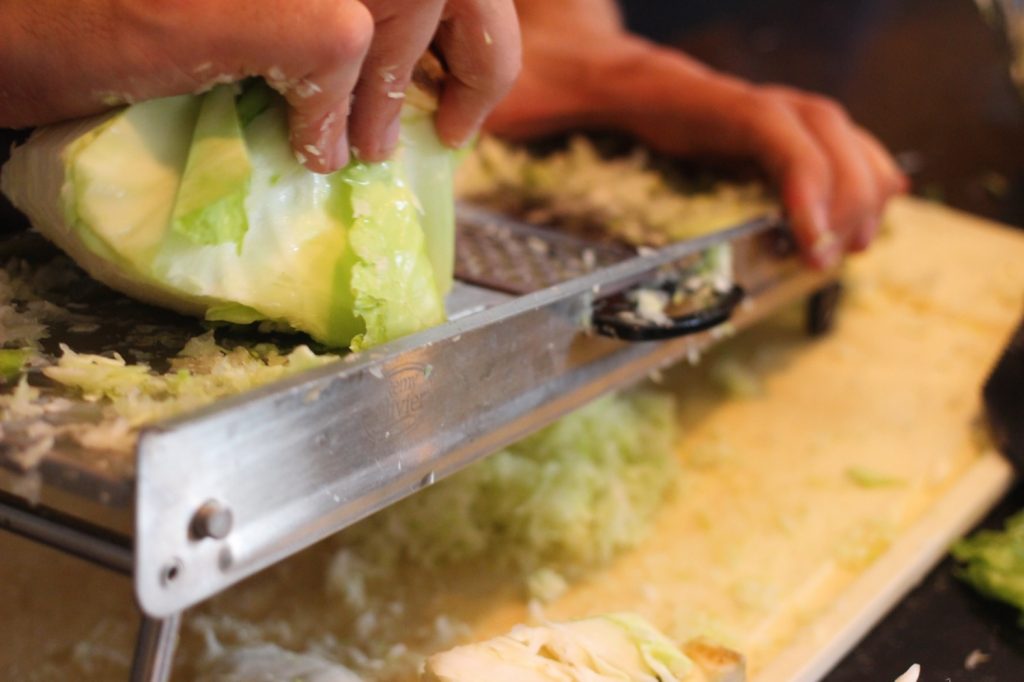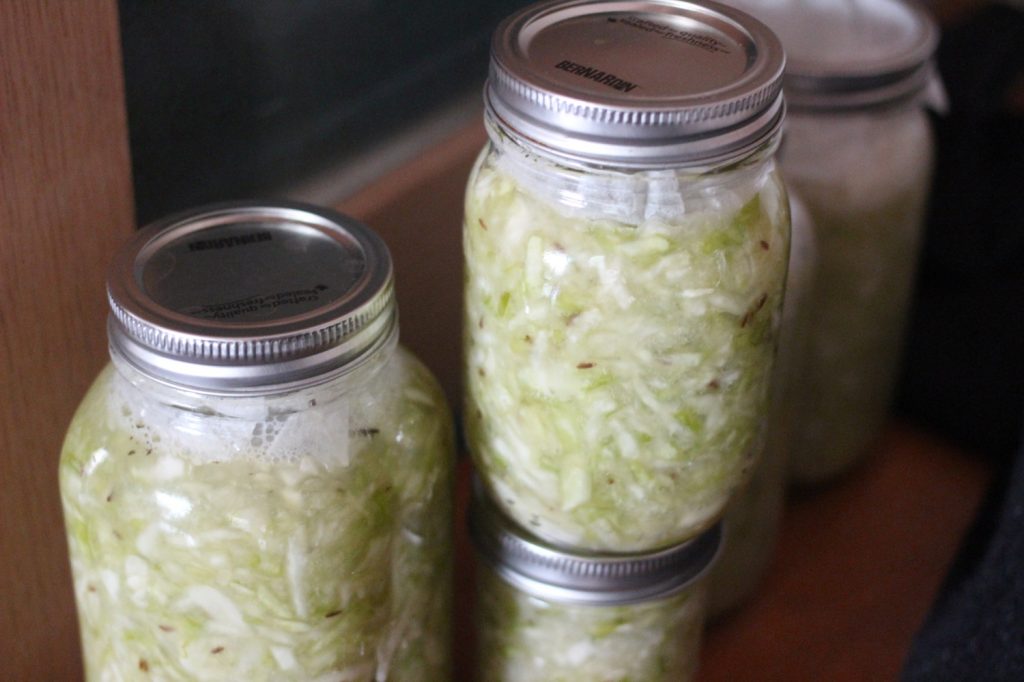
Why would you make one batch of sauerkraut when you could make three?
That was the theory behind this year’s non-spicy cabbage fermentation binge. In addition to the annual kimchi fest, I invited friends over to make less fiery ferments (speaking of that, it’s a great book).
Traditionally, sauerkraut sometimes has caraway seeds or juniper berries added, which pair well with the French comfort food dish called cassoulet. But I didn’t have caraway. Last year I used whole cumin seed, which was great, because when you add any whole seed, the flavour is enhanced by the salt brine. Every other mouthful pops suddenly with spice.
This year’s flavours were anise, tarragon and plain
Normally you add dry spices, but I figured just a little fresh tarragon wouldn’t hurt anything. And dried anise seed would add a subtle liquorice flavour with a little sweetness and a little bitterness. The recipe’s the same for all the types you make, you just have to separate the cabbage into separate bowls with each spice before stuffing them into mason jars. Here are the important tips:
- Go light on the spice. A little goes a long way.
- Weigh your cabbage (unless you’re a sauerkraut pro and can taste the salted cabbage and tell if it’s salty enough. Some call it expertise, others hubris).
- There really isn’t a third tip. It’s that easy.
Here’s the recipe from Sandor Katz, the modern day god of fermentation. I highly recommend his book Wild Fermentation: The Flavor, Nutrition, and Craft of Live-Culture Foods..

Leave a Reply